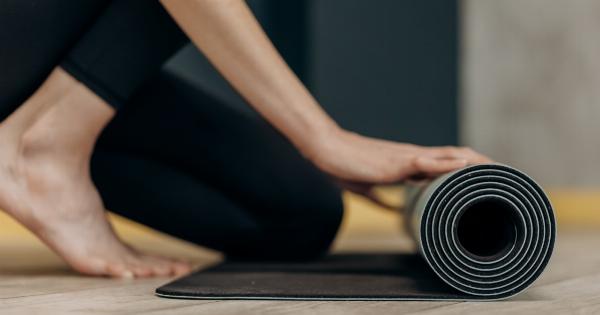Physical activity is essential for people with diabetes. Exercise helps control blood sugar levels, reduce the risk of heart disease and stroke, maintain a healthy weight, and improve overall wellness.
However, people with diabetes are prone to injuries and balance problems, which can be dangerous and limit their ability to exercise. This article covers practical tips and exercises to prevent injury and improve balance for diabetics.
Why Diabetics Need to Be Careful with Exercise
When you have diabetes, your body cannot process sugar properly. The excess sugar in your blood can damage nerves, blood vessels, and organs over time. This can lead to complications, such as:.
- Nerve damage (neuropathy), which can cause tingling, numbness, or pain in your feet and hands, and affect your balance and coordination.
- Foot problems, which can result from poor circulation, nerve damage, and skin dryness. Diabetes-related foot problems may include blisters, calluses, ulcers, and infections, which can be slow to heal and increase the risk of amputation.
- Eye problems, such as glaucoma, cataracts, and diabetic retinopathy, which can affect your vision and depth perception.
- Heart disease and peripheral artery disease (PAD), which can cause chest pain, shortness of breath, leg pain, and cramping during exercise or walking.
All of these conditions can affect your ability to exercise safely and effectively. Therefore, it is important to check with your doctor before starting or changing your exercise routine if you have diabetes.
How Exercise Helps Diabetics
While exercise can be challenging for diabetics, it can also offer many benefits, such as:.
- Reducing blood sugar levels by helping your body use insulin more efficiently and burning glucose for energy.
- Improving insulin sensitivity, which means your body needs less insulin to lower your blood sugar levels.
- Burning calories and fat, which can help you lose weight or maintain a healthy weight and reduce the risk of metabolic syndrome.
- Strengthening your heart, lungs, and muscles, which can improve your cardiovascular health, endurance, and mobility.
- Improving your mental health, mood, and quality of life by reducing stress, anxiety, and depression.
To reap the benefits of exercise, you need to do it regularly, consistently, and safely.
Preventing Injury during Exercise
Here are some tips to help you prevent injuries during exercise:.
1. Start Slowly and Progress Gradually
If you are new to exercise or have been inactive for a while, it is important to start slowly and gradually increase the intensity, duration, and frequency of your workouts.
This can help your body adapt to the new demands of exercise and reduce the risk of strains, sprains, or other injuries.
For example, you can begin with 5-10 minutes of warm-up exercises, such as stretching, walking, or light cardio, followed by 20-30 minutes of moderate-intensity exercise, such as cycling, swimming, or dancing, and finish with 5-10 minutes of cool-down exercises, such as stretching or walking.
As you become more comfortable with your routine, you can add more minutes or repetitions, increase the resistance or speed, or try new activities that challenge your balance, coordination, and strength.
2. Wear Proper Shoes and Clothing
Wearing the right footwear and clothing can also prevent injuries and improve your performance during exercise.
For example, you should choose shoes that fit well, have good arch support, cushioning, and traction, and are appropriate for your chosen activity.
If you have foot problems, such as bunions, corns, or hammertoes, you may need to consult a podiatrist for customized footwear or insoles.
You should also wear comfortable, breathable, and moisture-wicking clothes that allow you to move freely and avoid overheating or chafing.
If you exercise outdoors, you may need to dress in layers and wear reflective gear or sunscreen to protect your skin from the sun, wind, or rain.
3. Monitor Your Blood Sugar Levels
Before and after exercise, you should check your blood sugar levels to make sure they are in a safe range and adjust your medication or food intake accordingly.
If your blood sugar levels are too high or too low, you may feel dizzy, weak, confused, or even pass out, which can be dangerous.
You can also carry a glucose meter, some snacks, and water with you during exercise to treat any unexpected changes in your blood sugar levels and avoid hypoglycemia (low blood sugar).
4. Stay Hydrated
Drinking enough water before, during, and after exercise can also prevent dehydration, which can cause fatigue, cramps, dizziness, and other symptoms.
You should aim to drink at least 8-10 cups (64-80 ounces) of water or other non-caffeinated, non-alcoholic fluids per day, and more if you exercise or sweat heavily.
Improving Balance through Exercise
Balance is crucial for many daily activities, such as standing, walking, climbing stairs, and reaching objects. However, it can be challenging for diabetics who have nerve damage, foot problems, or other health issues.
Here are some exercises that can help you improve your balance:.
1. Tai Chi
Tai Chi is a low-impact, slow-paced, meditative exercise that combines breathing, gentle movements, and mental focus. It has been shown to improve balance, flexibility, strength, and relaxation in people with diabetes.
You can find Tai Chi classes in many community centers, gyms, or senior centers, or follow online videos or DVDs. Some simple Tai Chi movements include:.
- Cloud hands
- Brush knee and push
- Scooping the sea
- Single whip
- Snake creeps down
- Wave hands like clouds
2. Yoga
Yoga is another popular form of exercise that can enhance balance, flexibility, strength, and relaxation. It involves various postures, breathing techniques, and meditation practices that can benefit people with diabetes.
You can attend a yoga class or practice at home with a local or online instructor. Some yoga poses that can improve balance include:.
- Tree pose
- Warrior III
- Eagle pose
- Dancer pose
- Garland pose
- Standing hand-to-toe pose
3. Functional Training
Functional training focuses on movements that mimic the activities of daily living and can improve overall strength, balance, and coordination. It can include exercises such as:.
- Squats
- Lunges
- Step-ups
- Balancing on one leg
- Reaching for objects in different directions
- Carrying weights or resistance bands
You can do functional training with a personal trainer, physical therapist, or online coach, who can tailor the exercises to your needs and abilities. Remember to start with light weights or resistance and progress gradually to avoid injury.
4. Strength Training
Strength training can also improve balance, especially in older adults with diabetes who may have lost muscle mass and bone density. It can help strengthen your legs, core, arms, and back, which can support your balance and mobility.
You can use free weights, machines, resistance bands, or your body weight for strength training. Some exercises that can enhance balance include:.
- Deadlifts
- Squats
- Lunges
- Step-ups
- Bicep curls
- Tricep extensions
- Rows
- Planks
- Bird dog
Remember to use proper form, breathe deeply, and rest between sets to avoid injury and fatigue.
Conclusion
Exercise can be a powerful tool for managing diabetes, but it requires careful planning, preparation, and execution to prevent injury and improve balance.
By following the tips and exercises in this article, you can enhance your overall health, fitness, and wellbeing, and enjoy the many benefits of regular physical activity.






























